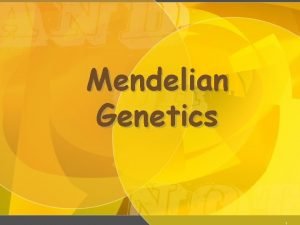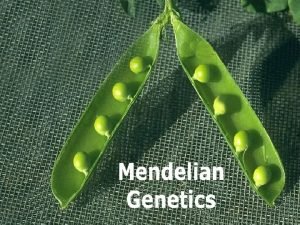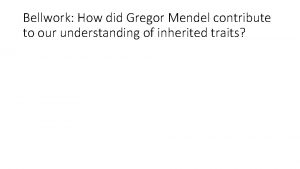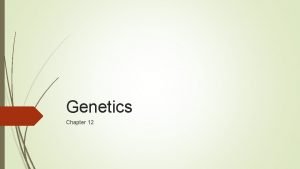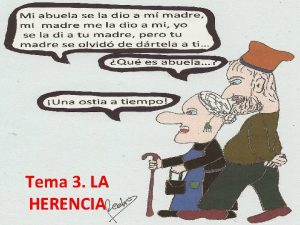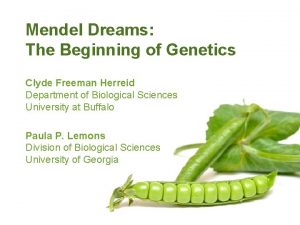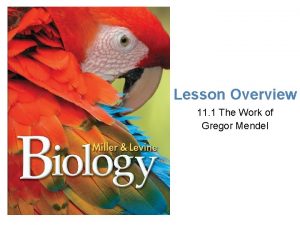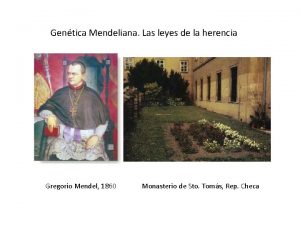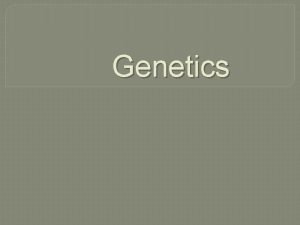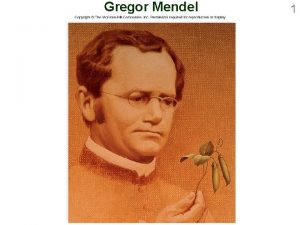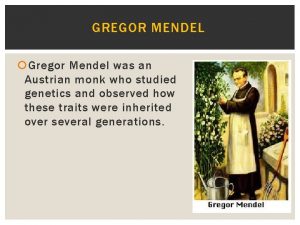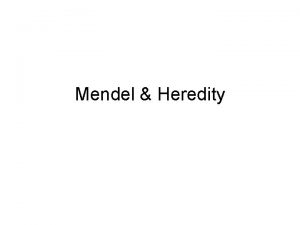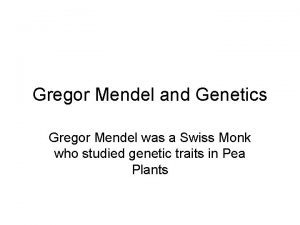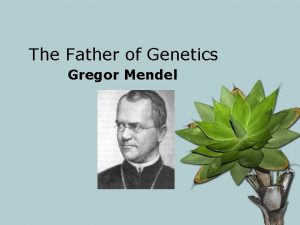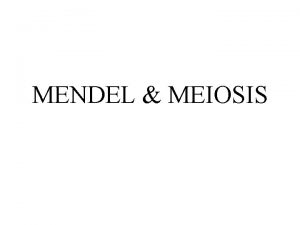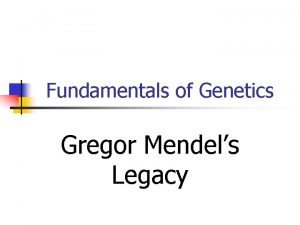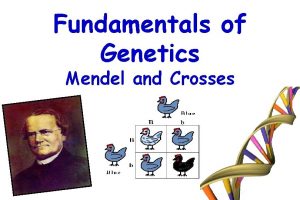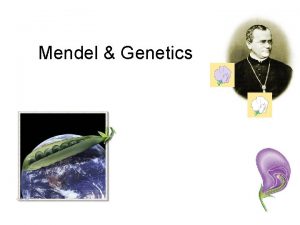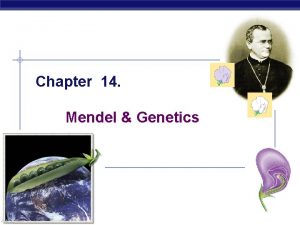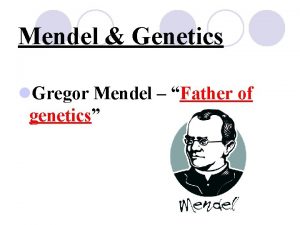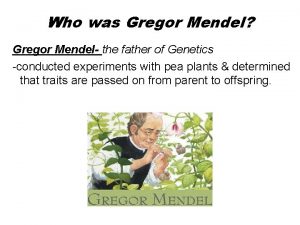Fundamentals of Genetics Early Genetics Gregor Mendel Austrian


















- Slides: 18

Fundamentals of Genetics

Early Genetics Gregor Mendel- Austrian monk—mid 1800 s “Father of Genetics” - studied garden peas Pisum sativum

Reasons for Mendel’s Success 1. Chose subject carefully- could manipulate which plants were crossed 2. Careful Research- studied one variable at a time * carefully controlled each experiment * analyzed data mathematically

Ex: Purple flowers X White Flowers P 1 Purple flowers X White flowers F 1 All Purple flowers (self-pollinate) F 2 3 Purple flowers: 1 White flower

Conclusions • Mendel concluded that there must be 2 factors controlling each trait • these “factors” are now called alleles • Recessive- allele that is masked by dominant (does not show up in F 1) • Dominant- allele that masks other trait, or appears in F 1

Mendel’s Laws 1. Law of segregation- states that a pair of factors is segregated, or separated, during the formation of gametes *when gametes unite, offspring will have two factors for a specific trait

Mendel’s Laws 2. Law of Independent Assortmentfactors for different characteristics are distributed to gametes independently *only observed for genes on separate chromosomes or located far apart on same chromosome

Genetic Cross Terminology • Genotype- genetic make-up of an organism (Ex: PP, Pp, pp) • Phenotype- appearance of an organism (Ex: tall or short, purple or white flowers)

Genetic Cross Terminology • Homozygous- both alleles of a pair are alike (PP or pp) • Heterozygous- alleles in a pair are different (Pp)

Genetic Cross Terminology • Probability- likelihood that an event will occur • Probability = ___________ • can be written as a fraction, decimal, or percentage

Monohybrid Crosses • Mono = “one” • cross involving only one trait • to predict probability of offspring inheriting certain traits, biologists use Punnett squares

3 Types of Monohybrid Cross 1. Homozygous x Homozygous 2. Homozygous x Heterozygous 3. Heterozygous x Heterozygous

Test Crosses • To determine genotype of an unknown individual that has a dominant phenotype, a test cross is performed • to do this, cross the unknown individual with a homozygous recessive individual

Incomplete Dominance • offspring have a phenotype in between that of the parents • 2 or more alleles influence phenotype (get an intermediate phenotype)

Incomplete Dominance • Example: four o’clocks (flowers) R = red flowers r = white flowers Red x White

Codominance • both alleles for a gene are expressed in a heterozygous offspring • Example: Roan colored horses R= red R’=white • Individual that is RR’ will have both white and red hairs in coat.

Dihybrid Crosses • Di = “two” • cross involving two traits • more complicated- more squares to fill in because there are more possible allele combinations

Types of Dihybrid Crosses 1. Homozygous x Homozygous 2. Heterozygous x Heterozygous 9 different genotypes 4 different phenotypes in a 9: 3: 3: 1 ratio
 Austrian monk
Austrian monk Austrian monk
Austrian monk Gregor mendel austrian monk
Gregor mendel austrian monk How did gregor mendel contribute to genetics
How did gregor mendel contribute to genetics Mendel monk
Mendel monk Chapter 11 biology test
Chapter 11 biology test Suit separate
Suit separate Gregor mendel
Gregor mendel Who is gregor mendel and what did he do?
Who is gregor mendel and what did he do? Chapter 12 lesson 1 the work of gregor mendel
Chapter 12 lesson 1 the work of gregor mendel Gregor mendel guisantes
Gregor mendel guisantes Rryy x rryy punnett square
Rryy x rryy punnett square Gregor mendel 1865
Gregor mendel 1865 Gregor mendel laws
Gregor mendel laws Gregor mendel summary
Gregor mendel summary Gregor mendel herencia
Gregor mendel herencia What did gregor mendel research
What did gregor mendel research Mendel genetics
Mendel genetics Gregor mendel referat
Gregor mendel referat
